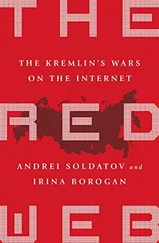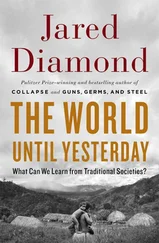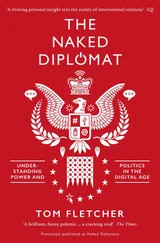Jared Cohen - The New Digital Age
Здесь есть возможность читать онлайн «Jared Cohen - The New Digital Age» весь текст электронной книги совершенно бесплатно (целиком полную версию без сокращений). В некоторых случаях можно слушать аудио, скачать через торрент в формате fb2 и присутствует краткое содержание. Жанр: Старинная литература, на английском языке. Описание произведения, (предисловие) а так же отзывы посетителей доступны на портале библиотеки ЛибКат.
- Название:The New Digital Age
- Автор:
- Жанр:
- Год:неизвестен
- ISBN:нет данных
- Рейтинг книги:5 / 5. Голосов: 1
-
Избранное:Добавить в избранное
- Отзывы:
-
Ваша оценка:
- 100
- 1
- 2
- 3
- 4
- 5
The New Digital Age: краткое содержание, описание и аннотация
Предлагаем к чтению аннотацию, описание, краткое содержание или предисловие (зависит от того, что написал сам автор книги «The New Digital Age»). Если вы не нашли необходимую информацию о книге — напишите в комментариях, мы постараемся отыскать её.
The New Digital Age — читать онлайн бесплатно полную книгу (весь текст) целиком
Ниже представлен текст книги, разбитый по страницам. Система сохранения места последней прочитанной страницы, позволяет с удобством читать онлайн бесплатно книгу «The New Digital Age», без необходимости каждый раз заново искать на чём Вы остановились. Поставьте закладку, и сможете в любой момент перейти на страницу, на которой закончили чтение.
Интервал:
Закладка:
Each society will offer slightly different packages in this initiative, depending on the culture and the level of technological sophistication, but the essentials of the process have a universal appeal: free top-of-the-line devices, cheap text and voice plans, credit to purchase apps, and data subsidization that allows people to use the Internet and e-mail inexpensively. These smart phones would be of a better quality than much of the population’s and cheaper to use, as well. They could be front-loaded with appealing vocational applications that would provide some momentum for upwardly mobile ex-combatants, like English-language instruction or even basic literacy education. A former child soldier in a South Sudanese refugee camp, who had been forced to leave his family at a young age, could have access to a device that connected him not only to local relatives, but also to potential mentors from the Sudanese diaspora abroad, perhaps young men who had successfully sought asylum in the United States and built wholly new lives for themselves.
Donor nations would likely pay for a program like this in its initial stages, then transfer the cost and control to the state in question. That would allow the government to maintain some leverage over the ex-combatants in its society. There could be software preloaded on the phone that allowed the state to track ex-combatants or monitor their browsing history for some period of time; ex-combatants would risk losing the data plan or the phone if they didn’t follow the rules of the program. A state would be able to institute a three-strike policy tied to the geo-location data on these phones: The first time an ex-combatant failed to check in with his equivalent of a probation officer at a prescribed time, he would receive a short video warning; the second failure would result in the data plan being suspended for some length of time, and the third failure would lead to the cancellation of the data plan and the repossession of the device.
Of course, enforcement would be a challenge, but the state would at least have more leverage than it would from a one-time cash payment. And there are ways to make this program desirable beyond useful apps and status-symbol phones. Ex-combatants will likely rely on pensions or benefits to provide for their families, so integrating those payments into a mobile money system is a smart way to keep the former fighters on the right path.
In order for this arms-for-phones project to work, however, it would need to be tied to a comprehensive and successful program—mobile phones alone would not get thousands of former fighters reintegrated in any sustainable way. As part of the reintegration and accountability programs, some ex-combatants would receive cash or special features for their device in exchange for photographs of arms caches or mass graves. Ex-combatants would have to feel fairly treated and adequately compensated to surrender both their guns and their sense of authority; programs that included counseling and classes in job skills would be important for helping these individuals transition into civilian life.
In Colombia, a largely successful DDR program to reintegrate former guerrilla fighters into society involved a wide network of support centers for ex-combatants, offering them educational, legal, psychosocial and health services. Unlike many other DDR programs, which are run far away from city centers, the government of Colombia made the bold move of placing many of the reintegration houses in the middle of the city. The government identified a need early on to build confidence in the program, both on the ex-combatant side and within society. Set up much like homes for runaway teens, these houses eventually became part of the community, with neighbors and other locals getting involved. The government used ex-combatants as spokespersons for why Colombians should not turn to violence. They spoke at universities, addressed former members of the Revolutionary Armed Forces of Colombia (FARC)—a forty-eight-year-old Colombian terrorist organization—and conducted community roundtables.
It’s unclear whether communication technologies will help or hinder the reconciliation process for noncombatants. On one hand, the ubiquity of devices during a conflict will help empower citizens to capture evidence they can use to seek justice in the post-conflict environment. On the other hand, with so much violence and suffering caught on digital tape (stored in perpetuity, and shared widely), it’s possible that the social or ethnic divisions that engendered the conflict will solidify when the volume of data is brought to light. The healing process for societies torn apart by civil or ethnic conflict is painful enough, and it requires a certain collective memory loss. With much more evidence, there will be much more to forgive.
In the future, technology will be used to document and record the implementation of various transitional justice processes, including reparations, vetting (like de-Baathification efforts), truth-and-reconciliation commissions, and even trials, making each of them more accessible and transparent. There are good and bad aspects to this shift. The televised trial of Saddam Hussein was cathartic for many Iraqis, but it also gave the late dictator and his supporters a stage on which to perform. Then again, as Nigel Snoad, a former senior U.N. aid worker now at Google, predicted, “Human-rights and justice groups can build a system for people to create memorials and to tell the story of those killed and who disappeared in the conflict.” Using these testimonials and memorials, he said, groups could “bring together stories from both sides, and despite conflicting accounts and occasional online flame wars (character bashing over the Internet through discussion lists and comments), create a space for apologies, truth-telling and an emerging reconciliation.”
The slow, painful mechanics of reconciliation will not be eliminated by Internet technology, nor should they be. Public admissions of guilt, sentencing and punishment, and gestures of forgiveness, are all cathartic for a society recovering from conflict. Today’s models for criminal prosecution at the international level—for crimes against humanity—are slow, bureaucratic and prone to corruption. Dozens of criminals sit in the International Criminal Court (ICC)—more casually referred to as The Hague—for many months before their trials even start. In today’s post-conflict environments, local court systems and indigenous local bodies are frequently preferred over the international institutions that lag behind.
The spread of technology is likely to exacerbate this trend. The sheer volume of digital evidence of crimes and violence will raise expectations that justice must be done, yet the glacial pace displayed by international judicial bodies like the ICC will limit how quickly such bodies adapt to these changes. For example, the ICC is unlikely to ever accept unverified videos captured on a mobile phone as evidence in its highly procedural trials (although organizations like Witness are trying to challenge this), but local judicial systems, with fewer legal constraints and a more flexible attitude, might be more open to developments in digital watermarking that will allow firsthand videos to be effectively authenticated. People will increasingly show their preference for these judicial avenues.
A local setting means that adjudicators, whether they are formal judges, tribal chiefs or community leaders, must have an intimate and expansive knowledge of the society—internal dynamics, main actors, major villains and all the nuances that international or distant bodies struggle to understand. When presented with digital evidence, the need for verification is lower, because the people and places are already familiar. In a postcrisis setting, there is also a distinct pressure from the community to mete out justice quickly. Whether these courts would be more or less fair than their international counterparts is a matter of debate, but they’ll surely move faster.
Читать дальшеИнтервал:
Закладка:
Похожие книги на «The New Digital Age»
Представляем Вашему вниманию похожие книги на «The New Digital Age» списком для выбора. Мы отобрали схожую по названию и смыслу литературу в надежде предоставить читателям больше вариантов отыскать новые, интересные, ещё непрочитанные произведения.
Обсуждение, отзывы о книге «The New Digital Age» и просто собственные мнения читателей. Оставьте ваши комментарии, напишите, что Вы думаете о произведении, его смысле или главных героях. Укажите что конкретно понравилось, а что нет, и почему Вы так считаете.












